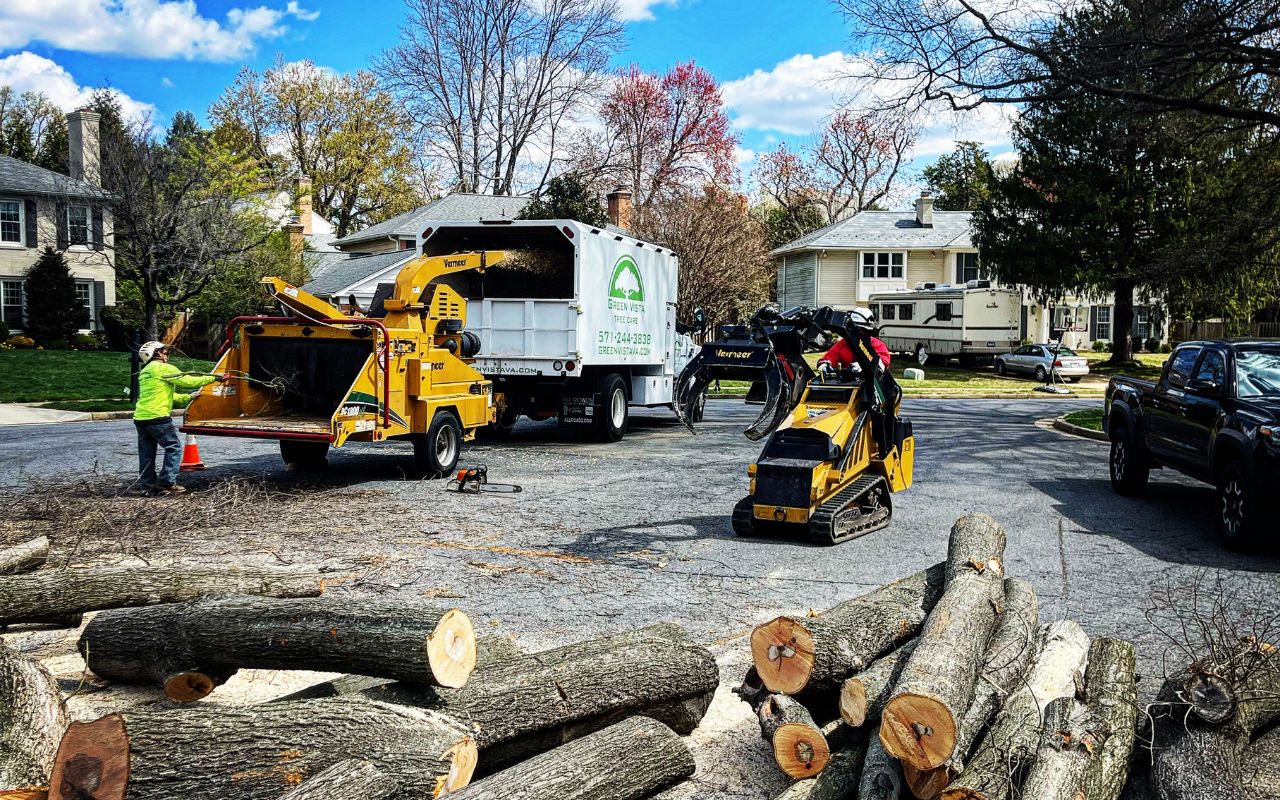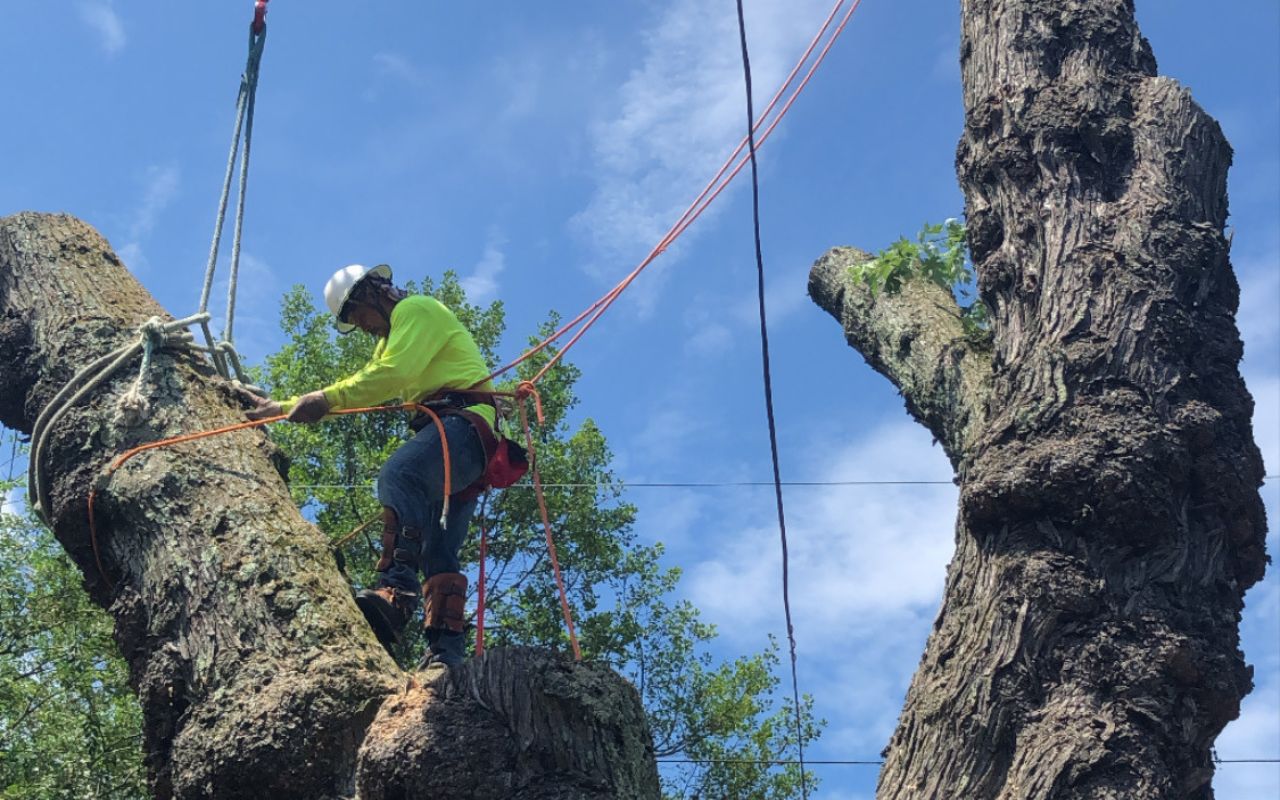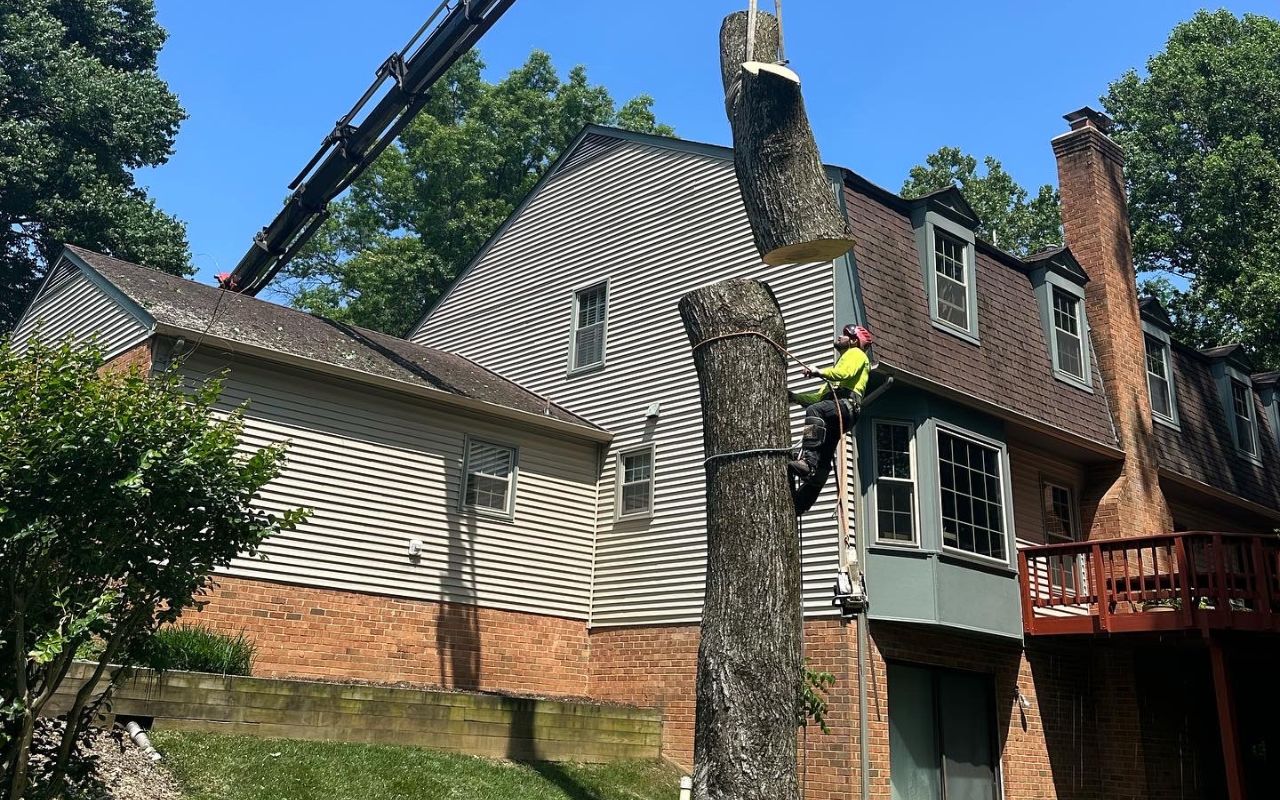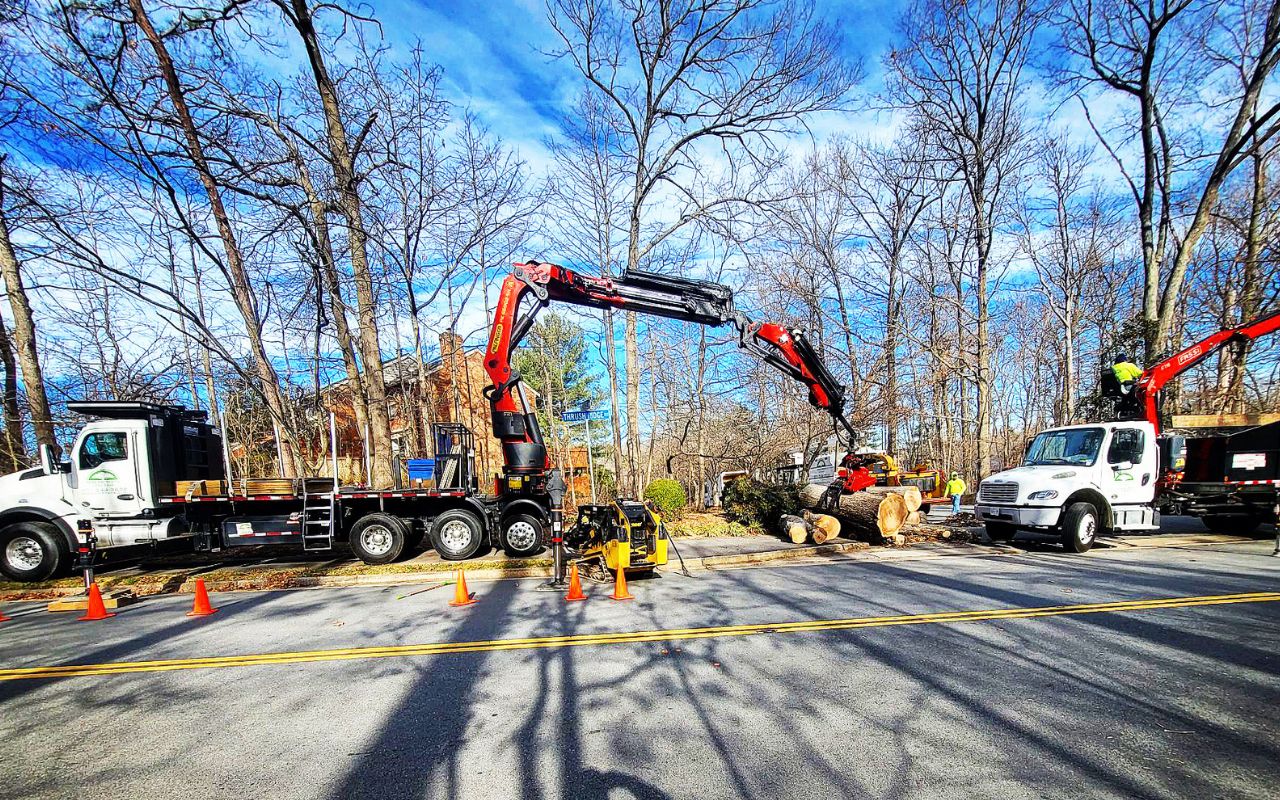If you’ve heard the adage “you get what you pay for,” you may not have realized how many aspects of life it can refer to. One of those things is the cost of tree removal. When you’re paying for a tree to be dismantled and removed from your property, you may be surprised by the variety of quotes you receive. Learn what goes into a tree removal quote, what questions to ask the tree removal company, and how to know whether the price is reasonable or not.
What’s involved in tree removal?
When you schedule a tree removal, the things involved in that tree removal include the obvious items, such as:
-
- Vehicles, equipment, and power tools
- Staff time and resources
- Permits and fees (in some cases)
But it also includes things that you won’t necessarily see, although they’re critical factors in making sure your tree is taken down safely. These include:
- Extensive and ongoing training for all crew members on proper tree removal techniques and safety protocols
- Years of knowledge and experience working with trees, physics (you’d be surprised at how much physics comes into play when cutting down a tree!), and tree removal equipment
- Comprehensive insurance coverage that protects you, your property, and the tree workers in the event of injury or damage – without it, you may be on the hook should anything go wrong.
Here are the types of insurance to look for when hiring a tree service >>
It’s this second set of factors that should have the largest influence on your decision about which tree removal service to hire. A company that demonstrates they have these will typically charge you more for the removal work. But they’re far more likely to do the job safely, quickly, and without incident. Plus, you’ll have the peace of mind knowing that you’re covered if an accident does occur.
However, not all tree removals are the same, and homeowners and property owners alike have learned the hard way that prices to remove a tree can vary greatly depending on the circumstances.

What affects the price of tree removal?
No two tree removal jobs are ever the same. It takes an experienced sales arborists to be able to properly quote a tree removal job. The arborist also needs to see the tree and what’s surrounding it before they can give an estimate (which is why we don’t give estimates over the phone).
In the end, the cost of tree removal comes down to time and risk. There is an almost endless list of factors that can influence time and/or the level of risk, but we go over some of the most common ones below.
How many trees need to be removed?
Understandably, the number of trees being removed will impact the price of the removal. The more trees, the higher the total cost. However, there will usually be a financial benefit to having multiple trees removed at once, rather than scheduling several different removal dates.
 How large is the tree?
How large is the tree?
Some of the smaller, ornamental trees may be easier to remove than a towering oak or pine tree.
Oftentimes, the price of tree removal is calculated based in part on the height of the tree, usually divided into trees up to about 30 feet tall, 30 to 60 feet tall, and above 60 feet.
It’s not just the time required to cut down a larger tree that makes it more expensive, it’s also the time needed to cut it up or chip it for disposal, plus the disposal costs.
Is the tree dead or dying?
Dead trees can be much more dangerous than living trees as they’re prone to unexpected breakage (that’s one of the reasons why we recommend they be removed as soon as possible). Any type of dead or dying tree can be unstable, and there is the added danger of limbs falling or trees failing unexpectedly.
Ash trees that have died from emerald ash borer (EAB) are especially brittle and dangerous; so much so that many tree removal companies refuse to work on them. It takes skill and knowledge, as well as the right heavy equipment, to safely remove an ash tree after it has been attacked and killed by EAB.
 Where is the tree located?
Where is the tree located?
The location of the tree often impacts the price of the removal more than other factors. For instance, if the tree is close to utilities such as overhead power lines, the risk of accident or injury increases. This might also mean delays in the work as the tree removal company coordinates with VA Power to ensure that power is temporarily turned off while the removal work is being done.
Tree removal is incredibly dangerous, particularly in the tight spaces common to the area around Alexandria, Arlington, and Fairfax counties in northern Virginia. One wrong move and the tree will come crashing through your roof, flatten a car, or hurt someone. If you’re considering DIY tree removal, read this first. Please leave this to the pros!
Location and accessibility issues can influence the price of tree removal. For example, any of the situations below will likely result in a higher cost:
- on a hill or sloped area
- in a hard-to-reach spot
- surrounded by other trees, buildings, pedestrian walkways, or power lines
- in an area where the ground is unstable
- close to a busy road
Learn more about the process of removing trees in narrow, tight, or hard-to-reach spaces.
For example, removing a large tree in an average front yard in Northern Virginia may cost approximately $2500. However, if that same tree is 50 yards behind the home in a backyard with surrounding gardens, a fence, a shed, and overhead power lines, the price could be two to three times that.
 Is it an emergency tree removal?
Is it an emergency tree removal?
When a tree falls due to a storm or high winds, time is of the essence. The tree may have fallen on a house or blocked a road or driveway, making timeliness all the more important.
Because of this quicker response time, the price of emergency tree work will likely be significantly higher than regularly scheduled work. Tree companies often have to delay work that had been scheduled weeks or even months in advance to respond to emergency tree removals. As a result, they may lose business. Therefore, expect the price to be significantly higher for any emergency tree work.
What time of year is it?
Sometimes, winter tree removal can be more cost-effective than at other times of the year. Tree companies are typically less busy during the winter (although we work all year round!), trees have less foliage to deal with, and, as a bonus to you, the heavy equipment and branches or logs have less chance of leaving dents in the frozen ground.
How many crew members are needed for the removal?
One of the benefits of our remote-controlled grapple-saw crane is that fewer crew members are needed to perform the removal. Without this type of specialized crane, a tree is usually taken down in pieces by a crew working together. This involves specially trained climbers who ascend the tree, cut off sections, and then either lower the heavy pieces to the ground using ropes or attach them to a sling so a crane operator can pick up each piece and guide it to the ground. Those pieces are then cut up further by the ground crew.
The remote-controlled crane eliminates the need for a climber and reduces the amount of manual lowering and cutting required. The grapple-saw crane simply grabs and cuts the limb on the tree and brings it to the ground. Depending on the size branch or log it cuts, the crane operator can guide the wood directly into a chipper or onto a log truck.
However, a crane or grapple-saw isn’t used in every situation. Learn more about our tree removal options here.
 Is the company properly outfitted for the job?
Is the company properly outfitted for the job?
When you pay less for a tree removal job, you may find that you’ve hired someone who isn’t properly trained or doesn’t have the correct equipment. While you may think you are saving money, it might cost you more in the long run if the job is done incorrectly or if someone or something is injured or harmed in the process. Reputable tree care companies train their employees thoroughly on proper techniques, safety procedures, and equipment knowledge.
Is the company properly insured for the job?
People often assume that a landscaper is just as capable of cutting down a tree as a tree service company. Unfortunately, landscapers often don’t have the correct tools or know-how to safely remove a tree, especially a large tree. And most are only insured for jobs up to 15 feet above the ground – way below the height of most trees.
Learn more about how to check for the proper insurance (and what to look for) here >>
Does the stump need to be removed as well?
Keep in mind that when you schedule tree removal, you will be left with a stump where the tree once stood. If you don’t mind the stump, you can leave it as-is. However, many property owners prefer to sow grass seed or to have a level area of their yard instead of an unsightly stump. In that case, stump grinding is required.
A tree removal quote typically does not include stump grinding unless you specifically ask for it.
Depending on the tree service company, stump grinding may be done on the same day as the removal or scheduled on a separate day as it requires different equipment than tree removal. Either way, it will be less expensive to include stump grinding in your original quote than it will be to get a separate quote for it at a later date.
 Ready to Cut Down Your Tree?
Ready to Cut Down Your Tree?
Not sure if your tree needs to be removed? Find out by reading our article on how to tell if a tree can be saved, or if it’s beyond that point and needs to be cut down.
When you’re ready, give us a call. We’ll set up an appointment to inspect your tree(s) and give you a realistic quote for tree removal. Our prices take into consideration the risk factors involved in your unique situation, the time required to do the job safely and properly, and the professional training, certifications, and insurance that set us apart from the competition.
Get helpful tips, local news, inspiring stories, and more delivered right to your inbox every month. Don't miss another issue - join today!





